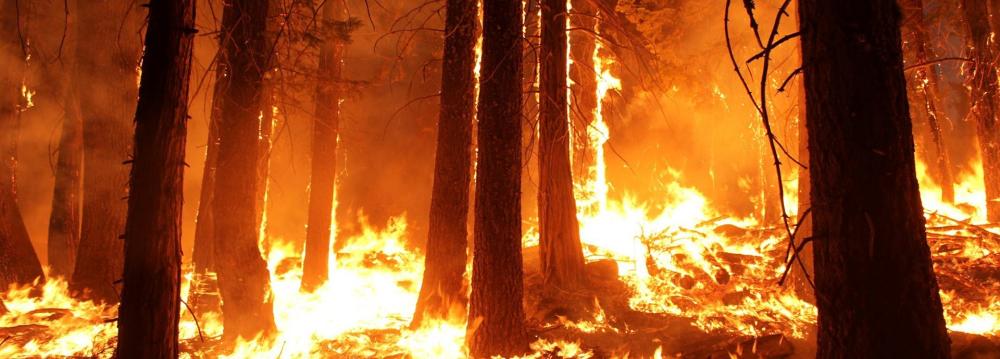Statistics provided by the Forests, Range and Watershed Management Organization show that the area of wildfires in forests and woodlands during the first quarter of the current Iranian year, which began on March 21, has noticeably declined compared to the same period last year.
Reza Bayani, director of engineering and studies office at FRWO said in the first three months of the current year (March 21-June 21), some 400 hectares of forests burned throughout the country, which marks a 72% decrease compared to last year's spring, IRNA reported.
"This is thanks to the comprehensive schemes to combat wildfires in northern and western forests, together with measures to improve crisis management in the event of an incident," he said.
Pointing to the fact that currently some 60% of the forests are protected against conflagration, the official hoped that the rate will reach 100% until the end of the Sixth Development Plan (2016-2021).
The target is attainable through joint conservation projects, comprehensive watershed management and sustainable management of forests, according to him.
Not Yet Satisfactory
"Although forest management schemes implemented throughout the woodlands across the country along with public cooperation to protect some 20 million hectares of forestlands have so far paid off, the results are yet to reach the satisfactory level," the official said.
Figures say over 50 million hectares of natural environment in the country, including woodlands, ranges and plains are extremely vulnerable to climate change and other destructive factors.
Iran's arid climate coupled with human carelessness has left the country's woodlands susceptible to wildfires.
Every year, particularly in summer, wildfires wreak havoc on forests and protected areas.
Reportedly, forests cover only 7% of Iran's landmass, which means protecting them is of utmost importance. Their destruction would have serious impacts on the climate and economy.
High-Tech Tracking
Vulnerable provinces such as Ilam, Kohgilouyeh-Boyerahmad and Khuzestan are equipped with "near real-time satellite imagery" that allows local authorities to pinpoint areas most likely to suffer from wildfires. Measures such as forming rapid response teams in every province, equipping park rangers with fire extinguishers and installing monitoring systems seem to have helped reduce the damage caused by forest fires.
In addition, deploying helicopters in 14 provinces has significantly reduced firefighters' response time and accelerated the process of putting out wildfires.
According to forestry officials, 95% of all wildfires in Iran are manmade, 30% of which are intentional. On average, forest blazes inflict losses worth 3.2 trillion rials ($73.5 million) on an annual basis.


